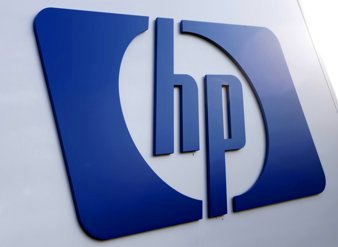 Palo Alto, California – As part of ongoing efforts to lower its carbon footprint across all phases of its business, HP announced on September 23 a goal to reduce the emissions intensity of its product portfolio(1) by 40 percent by 2020 compared to 2010 levels.(2)
Palo Alto, California – As part of ongoing efforts to lower its carbon footprint across all phases of its business, HP announced on September 23 a goal to reduce the emissions intensity of its product portfolio(1) by 40 percent by 2020 compared to 2010 levels.(2)
With this announcement, HP becomes the only global IT company to have set carbon reduction goals for all three parts of its value chain – operations, supply chain and product portfolio.
HP previously announced a goal to reduce total greenhouse gas emissions from its operations (Scope 1 and Scope 2) by 20 percent by 2020, compared to 2010 levels. This built on HP’s previous goal of a 20 percent carbon reduction, which the company achieved in 2011 – two years early. And last year, HP set a goal, the first for the IT industry, to drive a 20 percent decrease in first-tier manufacturing and product transportation-related greenhouse gas emissions intensity(3) by 2020, compared with 2010.
“As one of the world’s largest IT companies, we believe we are uniquely positioned to help our company and our customers lower carbon emissions by developing more sustainable technologies that replace outdated, inefficient processes and behaviours,” said Gabi Zedlmayer, Vice President and Chief Progress Officer, Corporate Affairs, HP. “With this new emissions goal, we are once again demonstrating our commitment to building a low carbon economy that creates a better future and a healthier world for generations to come.”
This new product portfolio goal represents the latest in a series of initiatives undertaken by HP to improve the performance and lower the environmental impact of its product portfolio, which accounts for approximately 61 percent of the company’s carbon emissions. This work includes improving data center efficiencies by developing energy-efficient solutions such as the HP Moonshot server architecture, which consumes up to 89 percent less energy,(4) uses 80 percent less space(4) and costs 77 percent less than a traditional server environment.(5)
HP Recognized by CDP as Climate Change Leader
HP’s efforts to reduce carbon emissions and mitigate the business risks of climate change have once again been recognized by CDP, an international, not-for-profit organization that provides the only global system for companies and cities to measure, disclose, manage and share vital environmental information.
In the CDP S&P 500 Climate Change Report 2014, released on September 23, HP received the highest possible disclosure score, 100 out of 100 points. This resulted in HP’s placement on the Climate Disclosure Leadership Index (CDLI), which spotlights companies that have demonstrated the highest level of transparency and data quality in their disclosure of climate-related information.
In addition, HP was one of 34 S&P 500 companies featured on this year’s CDP Climate Performance Leadership Index (CPLI), which highlights companies that have demonstrated a commitment to managing climate change by integrating it into their business strategy and taking actionable steps to mitigate climate related risks. HP was placed in the highest performance band of “A” for its climate performance assessment.
More information about HP’s carbon reduction goals and other sustainability efforts are available on the Living Progress website at:
www.hp.com/go/livingprogress
Source: HP.
Notes:
(1) Emissions intensity of the HP product portfolio refers to tonnes CO2e/net revenue arising from use of high-volume product lines, including notebooks, tablets, desktops, mobile computing devices and workstations; inkjet and LaserJet printers; and HP servers, including industry-standard servers, HP Moonshot and HP Apollo.
(2) Expressed as emissions generated per unit of output. The unit of output was determined per product line as follows: printer output represents carbon emissions from printing one A4 image; each personal system represents one unit of output; for servers, each unit of output equals a task performed by the system, as defined by industry standards.
(3) HP calculates emissions intensity as its suppliers’ greenhouse gas emissions divided by HP’s annual revenue. This method normalizes performance based on business productivity.
(4) Based on HP internal analysis of HP Moonshot with ProLiant Moonshot Server Cartridges.
(5) Based on HP internal estimates of total cost to operate HP Moonshot with ProLiant Moonshot Server Cartridges as compared to traditional servers.

















